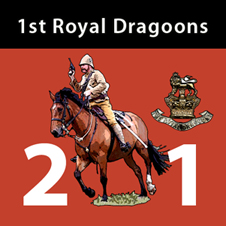Redverse Reverse, the battle of Colenso 1899 (
http://www.legionwargames.com/legion_redvers_reverse.html).
I will be working on this great game as developer. The designer is Geoff Noble and this is what he writes about his game:
"It is time high that some of the design philosophy is explained to help everyone better understand the game mechanics and why they have been selected. This will not be a comprehensive explanation of the rules but rather an explanation of why certain key game mechanics have been selected.
To set the scene I’ll start with the current description on the Legion company website:-
On the 15th December 1899 General Sir Redvers Buller tried to cross the Thukela River in order to relieve the Siege of Ladysmith. He was faced by well entrenched Boer commandoes who inflicted a reverse upon the British that ultimately led to Buller being relieved of command. Redvers Reverse is a solitaire area movement game that recreated the difficulties for the British in trying to affect a successful crossing of the Thukela against the Boer commandoes (who are played by the game system). The key feature of the game is to present the player with the problems and difficulties that Buller himself faced. The player is provided with the same level of information and ability to influence events.
In this post I’ll cover four key components of the game:
The Confidence Track, Ford Locations, Command Phase and the Variable Boer Combat Values.
1. Confidence Track. This is a measure of the confidence felt by the Boer during the battle and the likelihood of them retreating. History has largely forgotten the high state of nervousness in the Boer command prior to battle. From my readings I am very doubtful if the Boer would have faced the British at all if it was not for the strong personality of Botha. The Confidence track goes up incrementally each turn, it also goes up ever time the Boer have a measured battlefield success and goes down everytime the British have a measured battlefield success. When the confidence marker and the turn marker are in the same box, or the turn marker is in a high box, then there is a possible ’Shaken’ result against the Boer. As the British need to get two ‘Shaken’ results to win the game then it can be seen that the British are in a race against time in order to win. Boer morale will increase the longer the battles go on, this reflects what actually occurred.
2. Ford Location. The British did not reconnoiter the battlefield well before hand. As a result they were unclear as to the location of the fords and how practical they were to be used. This is reflected simply in the game by making the likelihood of finding each ford dependant on a hidden marker placed on each prior to the game start. Each marker is revealed when a British unit moves adjacent; it is a value against which two dice are thrown. If the die role succeeds the ford is found and can be used, if the die role fails the units planning on crossing must used the next nearest ford regardless of consequences.
3. Command. There a number of phases to command but in essence Brigades are sent orders, in the form of Objective areas. When the orders are received there is the possibility that the Leader of the Brigade will ‘Ignore’, ‘March to the Guns’ as well as doing as Commanded. Each leader has a lettered rating that provides a die roll modify to the Command acceptance role. As is clear from the history of the battle Buller did not have full control and the Command rules reflect that. Initiative is possible but has down sides.
4. Variable Boer Combat values. When the battle commenced the British has very little idea as to the location of the Boer. In order to reflect this in game turns I went for a variable Boer strength system. This means that when determining Boer fire strength three numbers are added to together – the base strength of the unit (printed on the counter), a negative figure for each lose inflected by the British player and a variable strength marker which is changed every turn after that unit fires. This means the player is never sure of the Boer strength in a particular location. They weren’t on the day so this has sound reasoning; based on the actual battle.
The net result of these 4 rules is that no two games will play the same. This has the obvious benefit of making the game replayable without becoming predictable. What works so well, I think, is that the reasoning in each case is soundly based on the reality of the battlefield.
There are other factors I would like to touch upon at a later date – Cavalry, Guns and under what circumstances the Boer units are released are three of those. I will post more at a latter date
The intent is that the player wins about 30% of the time. Play testing is intended to ensure that occurs. Any questions just ask."


 Portail
Portail










